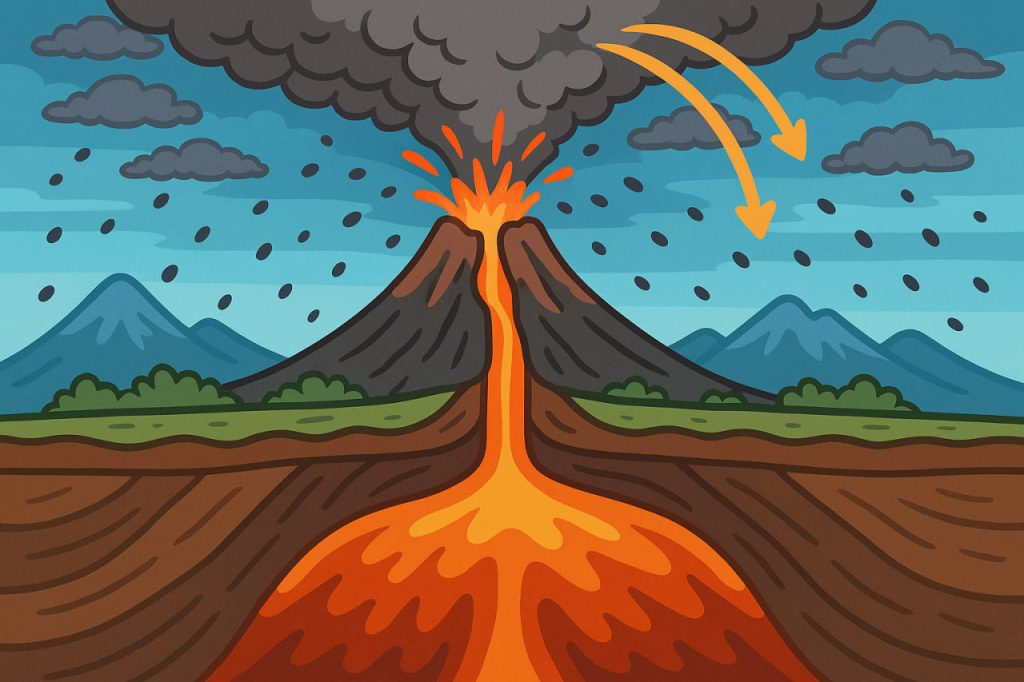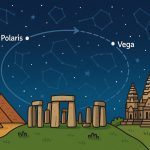Supervolcanoes are among the most powerful natural forces on Earth. Unlike regular volcanoes, whose eruptions can devastate nearby regions, supervolcanoes can alter the planet’s climate, reshape continents, and affect life on a global scale. These colossal eruptions release thousands of times more material than any ordinary volcanic event, and while they are extremely rare, their impact is nothing short of apocalyptic.
What Is a Supervolcano?
A supervolcano is defined not by the height of its cone but by the volume of magma it can erupt. To be classified as “super,” an eruption must reach 8 or higher on the Volcanic Explosivity Index (VEI) — meaning it ejects over 1,000 cubic kilometers (240 cubic miles) of volcanic material.
Rather than forming sharp mountains, supervolcanoes often exist as massive calderas — giant depressions left after a magma chamber empties and collapses. Famous examples include Yellowstone (USA), Toba (Indonesia), Taupō (New Zealand), and Campi Flegrei (Italy).
How Often Do Supervolcanoes Erupt?
Supervolcano eruptions are among the rarest geological events. Based on geological records and ash deposits, scientists estimate that:
- Massive VEI-8 eruptions occur roughly once every 50,000 to 100,000 years on average.
- Smaller but still catastrophic VEI-7 eruptions may happen every 1,000 to 2,000 years.
However, these averages can be misleading — Earth does not follow a fixed volcanic schedule. Sometimes millions of years can pass between such eruptions, and predicting the next one is nearly impossible.
The Largest Known Supervolcanic Eruptions
Throughout Earth’s history, several supervolcanoes have reshaped the climate and ecosystems worldwide:
- Toba Eruption (~74,000 years ago, Indonesia)
- One of the largest eruptions in the last 2 million years.
- Released over 2,800 cubic kilometers of ash and rock.
- Believed to have caused a volcanic winter, lowering global temperatures by 3–5°C.
- Some researchers suggest it triggered a human population bottleneck, reducing early Homo sapiens to a few thousand survivors.
- Yellowstone Eruptions (USA, last ~640,000 years ago)
- Produced calderas more than 70 km across.
- Three major eruptions occurred over the past 2.1 million years.
- The last eruption covered North America in ash and may have altered global weather patterns for decades.
- Taupō Eruption (~26,500 years ago, New Zealand)
- Created Lake Taupō, the country’s largest lake.
- The most recent eruption (~1,800 years ago) was still one of the most violent in human history.
- Campi Flegrei (Italy)
- A vast volcanic field near Naples, active for 40,000 years.
- Its eruption 39,000 years ago may have affected Europe’s Neanderthal populations.
How Scientists Measure Supervolcano Activity
Supervolcanoes don’t erupt suddenly — their magma chambers build pressure over tens or hundreds of thousands of years. Scientists monitor them using:
- Seismic sensors to detect underground tremors.
- Ground deformation measurements using satellites.
- Gas emissions, particularly sulfur dioxide and carbon dioxide.
- Thermal imaging to observe heat changes near the surface.
While there is no sign of an imminent supervolcano eruption today, studying their history helps scientists understand long-term risks and planetary evolution.
What Would Happen If One Erupted Today?
A modern supervolcano eruption would cause:
- Massive ash clouds blocking sunlight and cooling the planet (“volcanic winter”).
- Crop failures and food shortages due to lower temperatures.
- Global transportation collapse from ash in the atmosphere.
- Widespread ecosystem damage lasting centuries.
Even a moderate super-eruption could release as much energy as several thousand nuclear bombs, affecting the global climate for decades.
Could It Happen Soon?
According to current geological data:
- Yellowstone’s magma chamber is active.
- Campi Flegrei shows increased seismic activity in recent years.
In short, humanity may witness a supervolcano eruption in the near future — but the potential remains part of Earth’s natural cycle.
Interesting Facts
- Supervolcanoes can release more ash in days than Mount St. Helens did in its entire eruption.
- The Toba eruption may have reduced sunlight so much that global vegetation nearly collapsed.
- Yellowstone’s magma chamber spans about 55 kilometers in length.
- Over 20 supervolcano sites have been identified globally.
- Even without erupting, they influence geothermal activity and regional ecosystems.
Glossary
- Caldera — a large depression formed when a volcano collapses after an eruption.
- Volcanic Explosivity Index (VEI) — a scale measuring eruption magnitude based on ejected material.
- Volcanic winter — global cooling caused by ash and sulfur aerosols blocking sunlight.
- Magma chamber — a reservoir of molten rock beneath the Earth’s crust.
- Geothermal activity — heat emission from underground magma, often visible as geysers or hot springs.


